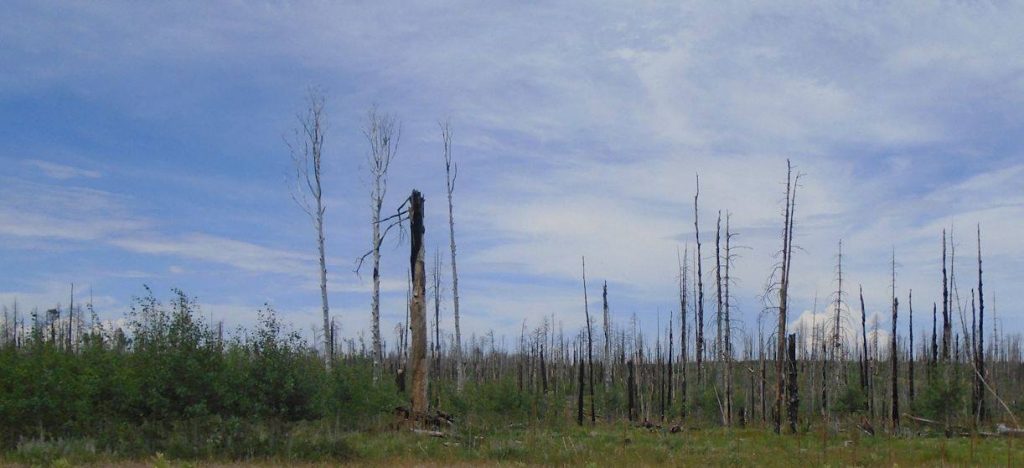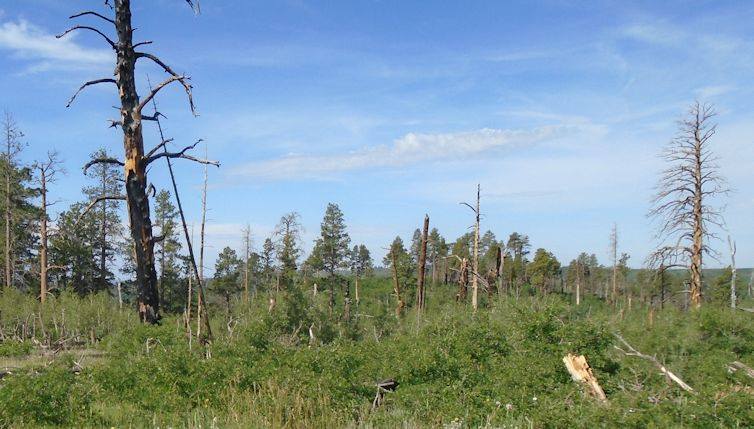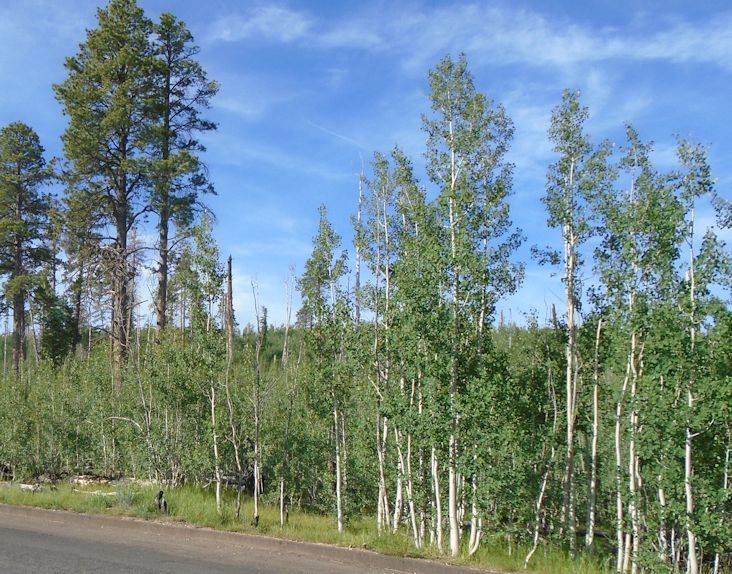
You cannot exclude fire from the forests, but you can manage it. We tried for decades to put out fires. It seemed a good idea at the time, but it changed the ecology of the forest, making it susceptible to larger and more disastrous fires. Fire is a natural part of the pine ecosystems. Only about 2% of the fires WERE intense enough to kill ponderosa pine. Recently, however, they have been hotter, due to the earlier fire repression regimes that allowed a lot of fuel build up. The forest service is now managing WITH fire rather than against it, but it may take decades to restore the forests to the stable & sustainable systems they were.

My pictures show the results of a big fire in 2000. Notice the aspens in the foreground. They need full sun to grow. Soon after a big fire, they sprout up. often from extensive root system. A patch of of trees is often the SAME tree. In the relative shelter of the aspens, gradually the pines take over again. The aspen ecosystem is short term. A pine ecosystem can persist for centuries.

North of the Grand Canyon, it is cool enough in some places to support firs, spruces and the Canadian regime plants. These are perhaps more fragile ecosystems. They are relics of the much colder times during the last ice age around 10,000 years ago. They persist, but if they are destroyed they are often replaced by species more adapted to the now warmer and drier conditions. BTW – I am talking about warmer and drier BEFORE the climate change we now expect. Presumably the challenge will get harder.

